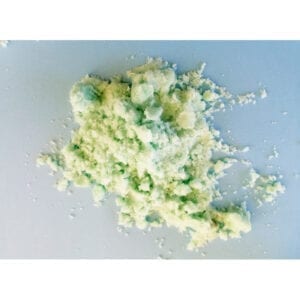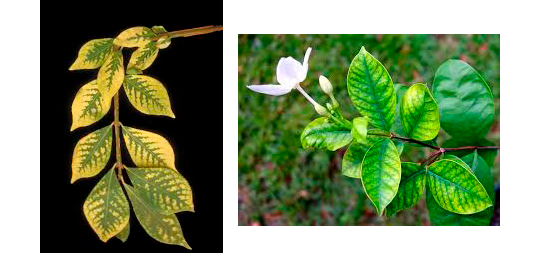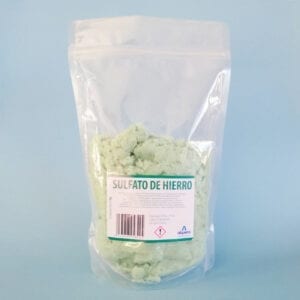Plants need 12 nutrients for their proper development, of these 12 nutrients are the so-called macronutrients which they need in high amounts and the micronutrients which they need in lower amounts. The iron sulphate for plants is related to iron deficiency. Iron is part of the micronutrients. In some soils, especially in soils with a high pH, it happens that micronutrients become insoluble, e.g. iron is insoluble in the soil. iron.
LOWERING THE PH OF THE SOIL WITH IRON SULPHATE HEPTAHYDRATE
Iron sulphate is a chemical product, with the formula FeSO4, which is available in powder and granulated form. Iron sulphate is a salt which, when mixed with the soil, acidifies it, i.e. the pH is lowered to values below 7. iron. The form in which iron sulphate is presented can be in particulate form, which is the most suitable format for dissolving it in water. In agriculture, the granulated form is also used, in this case it is mixed with the soil, without dissolving it in water. It is recommended to use the particulate form and to dissolve it in water.
The form in which iron sulphate is presented can be in particulate form, which is the most suitable format for dissolving it in water. In agriculture, the granulated form is also used, in this case it is mixed with the soil, without dissolving it in water. It is recommended to use the particulate form and to dissolve it in water.
HOW TO PROVIDE IRON SULPHATE FOR THE SOIL
To provide iron sulphate in the soil, the area would be irrigated with water containing 3 grams of iron sulphate dissolved per litre.. Water once a month with this water. In pots do not use iron sulphate but citric acid.
As a suggestion, you can complement the iron sulphate treatment by adding 3 grams per litre of iron chelates to another water. This should also be applied once a month, in a different week to the one in which the iron sulphate water was added.
With these two products (iron sulphate and iron chelates) the acidophilic plants in the garden will have enough iron and the other micronutrients such as manganese or copper thanks to the release caused by the sulphate by lowering the pH of the soil.
It remains to provide the rest of the nutrients for the complete fertilisation of the plants, especially the macronutrients: nitrogen, phosphorus and potassium. In alkaline soils, the dosage of phosphorus and potassium is increased, as some is lost as it becomes insoluble.
IRON IN PLANTS
The iron is a restorative for some enzymes and pigments to reduce nitrates and sulphates; it is also a power generator which is not used in the synthesis of chlorophyll but is essential in its formation, for crop nutrition, plant growth and plant health.
Iron deficiency in plants
Iron deficiency in plants manifests itself in the young leaves, which turn yellow, due to an imbalance between chlorophyll and carotene. Likewise, photosynthetic transport is reduced, which results in a decrease in sugars, starch and some amino acids.
In addition, when plants suffer from iron deficiency, other elements accumulate and alter the synthesis of proteins and the enrichment of lipids and unsaturated fatty acids, while the nerves remain green, producing iron chlorosis, which can attack only some branches, even though the others may remain healthy.
The first thing to do is to examine the roots of the diseased plant, as it may be over-watered and therefore unable to absorb nutrients properly. It may even be the case that the roots are diseased, making it difficult for them to absorb iron.
Excessive iron intake
Iron deficiency produces morphological and physiological changes; in the root there is an increase in the diameter of the root apical zone, and the formation of abundant root hairs. If the problem is not in the root, it is advisable to check the pH or degree of acidity of the soil.
The opposite happens when the plant is faced with excessive iron absorption, which rarely occurs due to the rapid conversion of soluble iron into insoluble compounds, and almost entirely without toxicity to the crops that grow in it, available to the plants. It happens that excess iron causes the fluorescence of chlorophyll to change. As a result, the plant will find it difficult to absorb solar energy correctly.
Buy Iron Sulphate
-
Iron Sulphate
6,90€ – 59,00€

